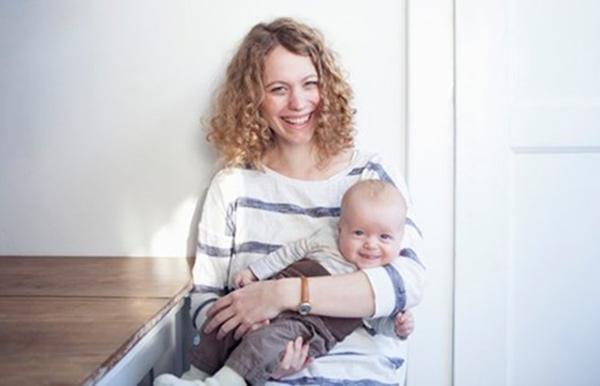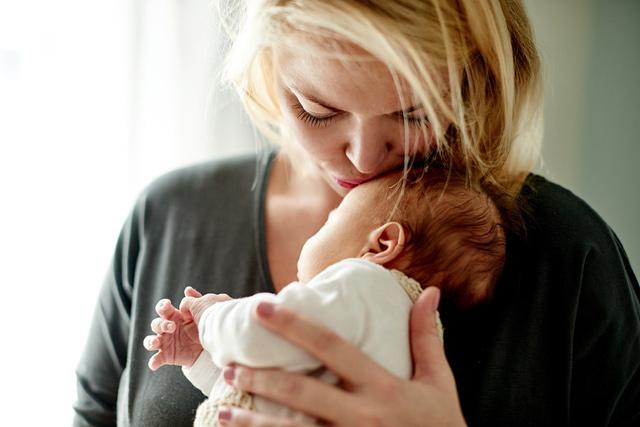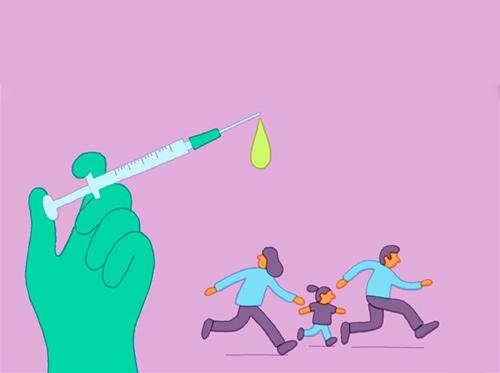You are here
Teaching new moms how to soothe infants might make vaccinations less stressful
By Reuters - Oct 23,2018 - Last updated at Oct 23,2018

Photo courtesy of goodreads.com
When getting their infants vaccinated, mothers were more likely to use proven techniques to ease babies’ pain if they had been taught how to do so before taking their newborns home from the hospital, a study found.
“Our primary goal was to give parents information that in general they don’t normally learn from anyone: how to soothe babies when they are in distress,” said study leader Anna Taddio, a professor in the Leslie Dan Faculty of Pharmacy at the University of Toronto and a senior associate scientist at the Hospital for Sick Children. “Parents tell us that it is quite stressful for them when their children have painful procedures done.”
To discover whether simple education methods could help parents learn to soothe babies during a painful procedure like vaccination, Taddio and her colleagues recruited 3,420 mothers of newborns while they and the babies were still in the hospital.
As reported in CMAJ, the researchers randomly assigned moms to one of three groups. All three groups received a pamphlet and a video about the importance of vaccinations. But one group also received a pamphlet describing three strategies for soothing babies’ pain. And another group got the pain pamphlet plus a video showing how to use the techniques.
The strategies for soothing infants’ pain were breast feeding, giving them sugar syrup and applying a topical anaesthetic.
When the children were two, four and six months old, the researchers asked the moms what types of calming strategies were used when the babies got vaccinations. By six months, 2,549 moms were still participating in the study.
Fifty-three per cent of moms who did not get the pain-control educational materials said they had given babies sugary syrup, breastfed or used an over the counter anaesthetic. Among moms who received an educational pamphlet, however, 61 per cent used one of those strategies. And among those who got a pamphlet and a video, 63 per cent used one of the methods.
That meant that 15 per cent to 19 per cent more women used pain soothing strategies when given education months before their babies’ vaccinations.
The babies are not the only ones to benefit from this kind of educational intervention, said Dr Lonnie Zeltzer, a distinguished professor of paediatrics, anaesthesiology, psychiatry and behavioural sciences at the David Geffen School of Medicine at the University of California, Los Angeles.
“By giving the parents these strategies to help their children, we are helping the parents mitigate their own anxieties and fears about pain exposure in their babies,” Zeltzer said. “And that, in turn can help the child feel calmer and less reactive and alarmed. We know from other studies that when someone is alarmed more adrenaline is produced. And if there is more adrenaline, there is an increase in sensory signals and an increase in the volume of pain signals. From that standpoint, this can be a major help for parents.”
Beyond that, earlier studies done by Taddio showed that in some children, pain can change brain wiring. “Repeated pain exposure can create central pain circuits that make kids more pain sensitive,” Zeltzer said.
But if the child is distracted from the pain, that brain rewiring is less likely to occur, Zeltzer said. And the distraction is not that hard to manage, she added.
“In the early 80s I showed that if you can get children involved with a good story, a good enough distractor to hold the child’s attention, you could get the brain focus shifted and that actually reduces the pain,” Zeltzer said.
Related Articles
Being a new parent, people will tell you, is overwhelming. A new baby does not come with instructions.
In this era of social distancing and depressing news, we could all do with a good hug.
By Sonja HallerNo one particularly likes getting a shot.

















